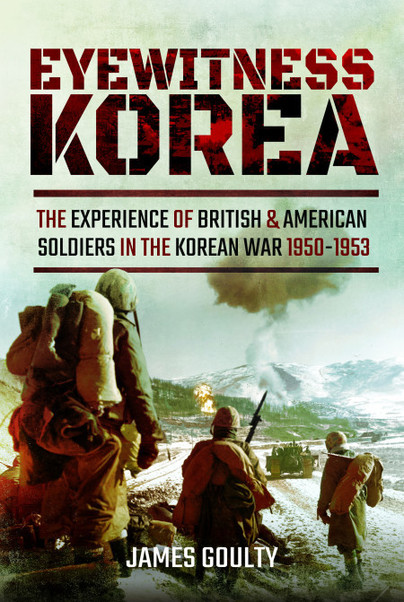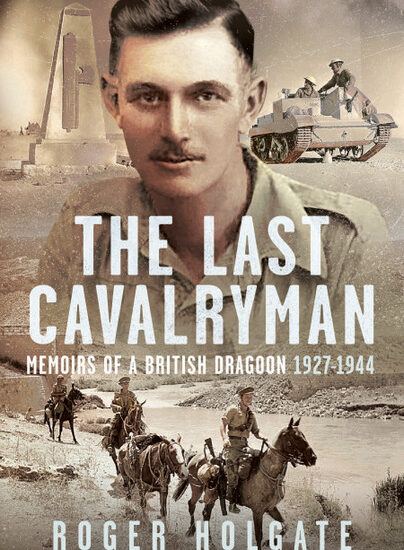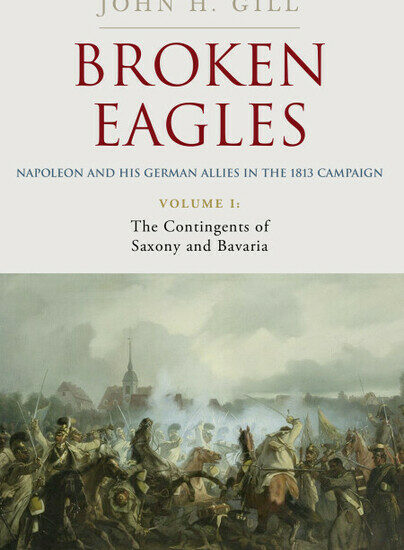The Korean War 1950-1953: An Overview
Today we have a fantastic guest post from author James Goulty! Here James offers us a fascinating overview of The Korean War. Enjoy!
Eyewitness Korea by James Goulty is out now.
At the end of the Second World War it was agreed that Japanese forces to the north of the 38th Parallel would surrender to the Soviet Union, whereas those in the south would surrender to American troops. Consequently, the 38th Parallel became a political frontier, marking the division between the Republic of Korea (ROK), established in the south during August 1947, and the Democratic People’s Republic of Korea (DPRK) in the north. The former received assistance from America, while in the north the DPRK was heavily under the influence of the Soviet Union, who helped create the North Korean People’s Army (NKPA). Compared with the forces available to the ROK, this was much more potent force, and notably incorporated an armoured brigade equipped with T-34/85 tanks, potentially formidable weapons in a part of the world where armoured vehicles were comparatively rare.
On 25 June 1950 the DPRK invaded the South, making rapid progress and capturing Seoul. This came as a shock to many in the West, even though tensions had been high in Korea throughout the late 1940s. In response to the invasion the United Nations Security Council invited members to assist the ROK in an effort to force the withdrawal of the NKPA. President Truman sanctioned General Douglas MacArthur (US Far East Commander) to provide air and naval assistance, and the Americans were rapidly joined by ships from the Royal Navy fighting under the banner of the UN. Soon ground troops were requested as well. Under Major-General William Dean, the American 24th Infantry Division was deployed from Japan, where most of its troops had led comfortable lives on garrison duty, leaving them under-prepared for combat. The Division fought a series of delaying actions during late June and July 1950, but was unable to halt the NKPA.
By August the North Koreans had boxed-in American and ROK forces into what was dubbed the ‘Pusan Perimeter’ in the south east of Korea. The situation was desperate, and the American commander on the ground, General Walton H. Walker sought to hold the line while more units arrived via the port of Pusan, ultimately enabling him to go onto the offensive. Units that arrived in September included the British 27th Infantry Brigade, consisting of the First Battalions from the Middlesex Regiment and Argyll and Sutherland Highlanders that had been in Hong Kong.
Alongside ground units from the ROK, America and Britain, Canada, Australia, New Zealand, Turkey, Thailand, France, Greece, Ethiopia, Holland, Columbia, Belgium, Luxembourg, and South Africa, eventually all contributed combatant or non-combatant units to the Korean War. Additionally, medical/hospital resources were provided by some UN members including India, Norway and Denmark.
On 15 September 1950, a landing was made by the American X Corps at Inchon, around 150 miles north of the Pusan Perimeter. After heavy fighting troops in the Pusan Perimeter advanced northwards, eventually linking up with those landed at Inchon on 26 September, when simultaneously Seoul was liberated. The territory held by the NKPA had been split in two, and during November UN units penetrated almost as far as the Yalu River, the border between the DPRK and Communist China. This decision to advance into North Korea helped bring China into the war and on 25 November a massive offensive was launched by the Chinese, assisted by the nature of the UN forces advance that saw Eighth Army surge forward in the west, while X Corps landed in north eastern Korea. By late 1950, Eighth Army had been forced back towards the 38th Parallel, and X Corps after an epic campaign in the depths of the North Korean winter had to be evacuated by sea.
From General MacArthur’s perspective, being prevented from bombing bridges over the Yalu or flying reconnaissance missions over China owing to fears of the war escalating with all out Chinese involvement, proved deeply frustrating. In late December 1950, General Walker was killed in a road accident, leaving the UN forces in an even more perilous position. His successor was General Matthew B. Ridgway, who’d been a distinguished airborne commander during the Second World War, and would prove instrumental in restoring the fighting spirit of Eighth Army.
However, General MacArthur as the supreme commander remained irked by the decision not to tackle China in an effort to win the war. This would entail bombing Chinese industries, mounting a naval blockade, deploying Nationalist Chinese troops from Formosa (Taiwan), and launching guerrilla operations, all of which were rejected by President Truman. Instead the American led UN Command sought to end the war by negotiation, and aspirations that the North and South might be united as one country were dropped.
In early January 1951 UN forces were pushed back further under the weight of another Chinese offensive, leading again to fall of Seoul. Under General Ridgway UN ground forces proceeded to mount a series of limited counter offensives during spring 1951. These made use of the heavy fire power available, particularly to American units, something troops termed ‘the meat grinder’ as one of the aims was to inflict maximum casualties on the enemy. Seoul was eventually re-captured on 14 March 1951, and the frontline started to solidify around the 38th Parallel, which acted as a catalyst for the Truman administration to start seeking negotiations. Aware of a forthcoming Presidential announcement on the issue, General MacArthur pre-empted this with a foreign policy statement of his own that Washington deemed as provocative and insubordinate. Consequently, General MacArthur was sacked on 11 April, and replaced by General Ridgway, with General James Van Fleet taking charge of Eighth Army.
The fighting ebbed and flowed around the area of the 38th Parallel for the remainder of the war, as the American led UN forces beat off numerous Communist offensives. On 12 November 1951, peace talks opened at Panmunjom and made faltering progress until autumn 1952. Subsequently, on becoming President in early 1953, Eisenhower pledged to end the war in Korea. The peace talks resumed and were held while the fighting continued under static conditions reminiscent of the First World War. This led many Western troops to question the purpose of the war, and there was a palpable sense among some that there seemed little point in ‘dying for a tie.’
Eventually an armistice agreement was signed on 27 July 1953, one consequence of which was the establishment of a DMZ (Demilitarised Zone), separating North Korea from South Korea, that remains in place today. Total UN casualties equated to around 118,515 killed, nearly 1000 of who came from Britain. Over 264,000 UN service personnel were wounded and approximately 92,000 became POWs. In contrast, the Communists lost at least 1,600,000 and millions of Korean civilians were killed. One aspect of the war that left an indelible mark on many American and British veterans was the poverty of the Korean civilian population in the 1950s, and the desperate plight of refugees.
I hope that you’ve found this overview useful. If you would like to read more on the Korean War 1950-1953-please see my forthcoming book: Eyewitness Korea (Pen and Sword, 2018).


